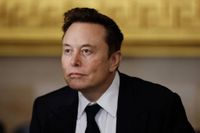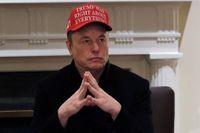On Friday, March 28, 2025, Elon Musk announced a significant business move as he sold his social media platform X, formerly known as Twitter, to his artificial intelligence company xAI for approximately US$ 45 billion. This deal, which notably includes US$ 12 billion in debt, values X at US$ 33 billion, while the combined company is estimated to be worth around US$ 80 billion.
Musk made the announcement via a post on X, stating, "The futures of xAI and X are intertwined. Today, we officially take the step to combine data, models, computing, distribution, and talent. This combination will unlock immense potential by merging xAI's advanced AI capabilities with X's massive reach." This integration is expected to enhance user experiences, making them "smarter and more meaningful," Musk added.
Since acquiring Twitter in October 2022 for about US$ 44 billion, Musk has implemented drastic changes to the platform, including a significant reduction in workforce—reportedly cutting 80% of the staff—and altering the verification system, which has led to some advertisers fleeing the platform. Despite these challenges, there are signs of recovery, as major advertisers like Amazon and Apple are reportedly reinvesting in X.
In the wake of the acquisition, Fidelity estimated that X was worth nearly 80% less than Musk's purchase price, a stark indicator of the platform's struggles. However, Musk's recent actions, including the integration of the Grok chatbot developed by xAI into the platform, suggest a strategic pivot aimed at revitalizing X's market position.
Launched less than two years ago, xAI has quickly emerged as a notable player in the AI sector, recently raising US$ 6 billion in a funding round that valued the company at US$ 40 billion. The startup is engaged in developing advanced AI models and data centers, with plans for a supercomputer in Memphis, Tennessee, dubbed "Colossus," which is touted as one of the largest in the world. This supercomputer, along with the newly introduced Grok-3 chatbot, which boasts ten times the computational resources of its predecessor, positions xAI as a formidable competitor against giants like OpenAI and Google.
Musk's ambitions in the AI space are not without controversy. Earlier this year, he led a consortium in an unsuccessful bid to acquire OpenAI for nearly US$ 100 billion, a move that underscores his competitive nature within the industry. The rejection of this offer has not deterred Musk, who continues to focus on advancing xAI's capabilities.
As Musk integrates xAI with X, the potential for innovative applications of AI within the social media landscape is vast. However, the exact benefits of this acquisition for Musk's broader AI ambitions remain to be seen. The merger could allow xAI to push its latest models and resources to a wider audience more rapidly, effectively leveraging X's extensive user base of over 600 million.
Despite the challenges faced by X, including a reputation tarnished by controversial content and a mass exodus of advertisers due to the rise of hate speech on the platform, there are indications of a turnaround. Following Musk's pro-Trump pivot, which included promoting conspiracy theories and supporting the former president's campaign, some advertisers are cautiously returning, viewing their investments as necessary to avoid possible repercussions from Musk's political connections.
Analysts predict that advertising revenues for X may grow this year, driven by fears among brands of alienating Musk, who now holds significant political sway as a close advisor to President Donald Trump. Jasmine Enberg, a principal analyst at eMarketer, noted that many advertisers may consider spending on X as a "cost of doing business" to mitigate potential legal or financial repercussions.
In summary, Musk's acquisition of X by xAI marks a pivotal moment in the intersection of social media and artificial intelligence, with the potential to reshape user experiences and redefine industry standards. As this merger unfolds, the tech world will be watching closely to see how Musk navigates the complexities of integrating these two powerful entities.







